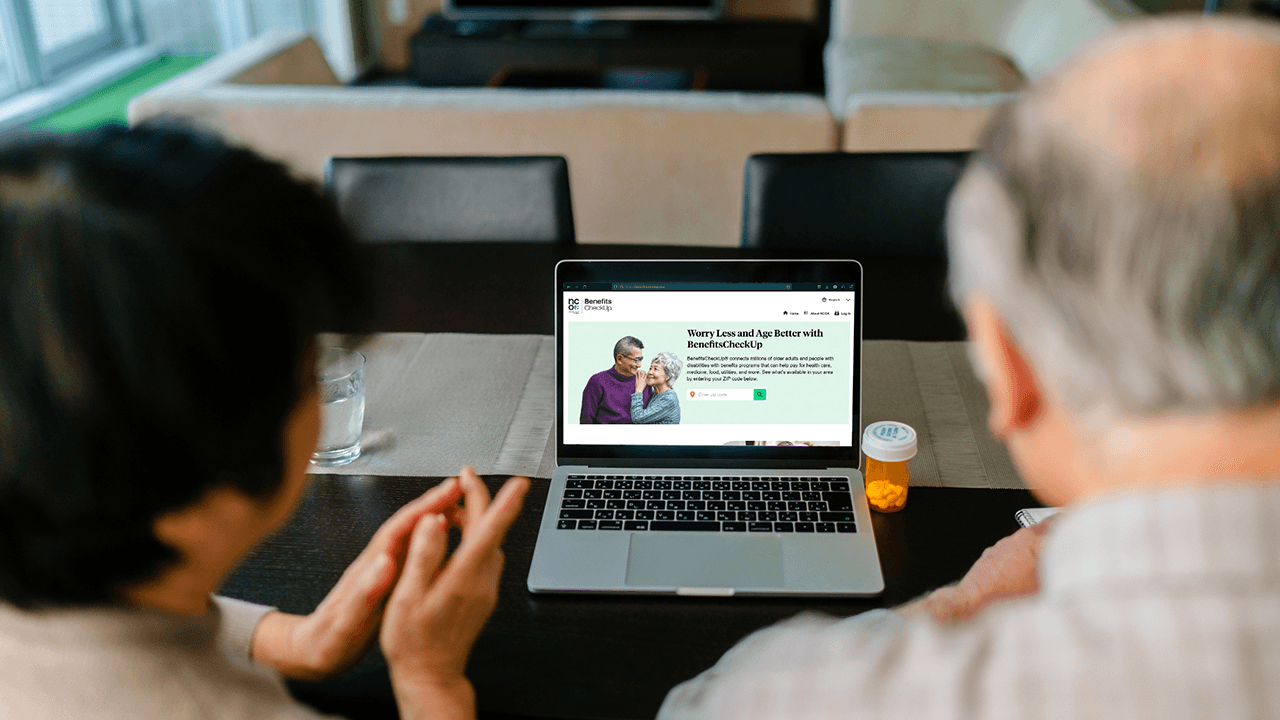What Is An Achieving a Better Life Experience (ABLE) Account?
4 min read

Related Topics
Older adults living with disabilities are more likely to cover their basic needs through government benefit programs such as Medicaid and the Supplemental Nutrition Assistance Program. However, they can only have so much income or resources to keep those benefits, despite any extra care costs they may have. With nearly 44% of older adults in the U.S. living with a disability,1 opening an Achieving a Better Life Experience (ABLE) account can help them pay for expenses and still qualify for benefits.
What is an Achieving a Better Life Experience (ABLE Account?
An ABLE account is a tax-free savings account older adults can put money in to help them pay for “qualified disability expenses” while staying enrolled in benefit programs.2 These expenses cover needs such as:2
- Assistive devices, like screen readers for people with vision loss
- Education
- Financial management
- Health care
- Housing
- Job training
- Transportation
Who is eligible for ABLE accounts?
Older adults who want to open ABLE accounts must meet the following guidelines:3
- Have a disability diagnosed before turning 26
- Get Supplemental Security Income (SSI) or Social Security Disability Insurance (SSDI)
- Have written proof from a doctor that your disability is serious enough to affect daily life
People without SSI or SSDI benefits can ask their doctor to sign a form that confirms they were diagnosed with a disability before age 26.3 The ABLE National Resource Center offers disability certification forms online. However, the Social Security Administration has a list of medical conditions that don’t require a doctor’s proof.3
Starting Jan. 1, 2026, older adults will need to show they had a disability before age 46 to open an ABLE account.
How do I apply for an ABLE account?
You can apply for ABLE accounts through your state’s ABLE program website. ABLE accounts are available in most states and the District of Columbia except Idaho, North Dakota, South Dakota, and Wisconsin.
You also don’t have to open an ABLE account in your home state. There are 30 states plus the District of Columbia that allow people to apply for ABLE accounts no matter where they live in order to find the account that suits them best.4 Use the ABLE National Resource Center's map to find your state’s ABLE website.
How much money can I put in an ABLE account?
You can have as much as $550,000 in your ABLE account depending on where it’s based,5 and as of 2024, you can place no more than $18,000 in your ABLE account annually.2 If you’re still working but don’t have a retirement plan through your job, you can add more than $18,000 in a year. However, it can’t be any more than the previous year’s federal poverty level for a single-person household.5. In 2023, the level was $13,590 in the continental U.S., $16,990 in Alaska, and $15,630 in Hawaii.2 The 2024 FPL numbers: $14,50 for single person households in the continental U.S., $18,210 in Alaska, and $16,770 in Hawaii.2a
In addition to how much money you can have in your account, each state’s ABLE account program will differ in the following ways:6
- If the plan comes with a prepaid or debit card
- The bank used to host your account
- If you can get tax credits or deductions for the money you put in
- If your state’s Medicaid agency can use your account to reimburse itself after your death
While ABLE accounts are meant to help you keep your benefits, it’s important to note that older adults who get SSI benefits will temporarily lose them once their account balance goes over $100,000.5 Once the balance goes back under $100,000, those benefits will be restored.
Can someone else manage my ABLE Account?
Older adults can also choose someone, such as a caregiver, to open an ABLE account on their behalf. The Social Security Administration calls this person a representative payee. The payee is responsible for account management including:7
- Keeping track of how account money is spent
- Estimating your current and future expenses
- Making any investments on your behalf
Following all the guidelines for managing an ABLE account can be an overwhelming process. If you or your caregiver need help, you can use the Eldercare Locator to find free financial planning services.
Sources
1. Centers for Disease Control and Prevention. CDC Data Shows Over 70 Million U.S. Adults Reported Having a Disability. July 16, 2024. Found on the Internet at https://www.cdc.gov/media/releases/2024/s0716-Adult-disability.html
2. Social Security Administration. SPOTLIGHT ON ACHIEVING A BETTER LIFE EXPERIENCE (ABLE) ACCOUNTS -- 2024 Edition. Found on the Internet at https://www.ssa.gov/ssi/spotlights/spot-able.html
2a. ABLE National Resource Center. ABLE Account Contribution Limits (2024). Found on the internet at https://www.ablenrc.org/able-account-contribution-limits-2023/
3. ABLE National Resource Center. Frequently Asked Questions. Found on the Internet at https://www.ablenrc.org/frequently-asked-questions/#eligibility
4. ABLE National Resource Center. Choose the program that’s right for you! Found on the Internet at https://www.ablenrc.org/select-a-state-program/
5. ABLE National Resource Center. What is ABLE? Found on the Internet at https://www.ablenrc.org/employers/what-is-able/
6. ABLE National Resource Center. Washington. Found on the Internet at https://www.ablenrc.org/state-review/washington/
7. Social Security Administration. Payee and ABLE Accounts. Found on the Internet at https://www.ssa.gov/payee/able_accounts.htm




